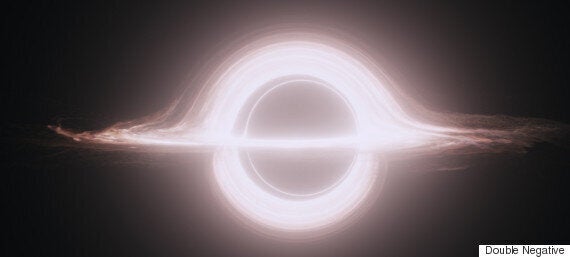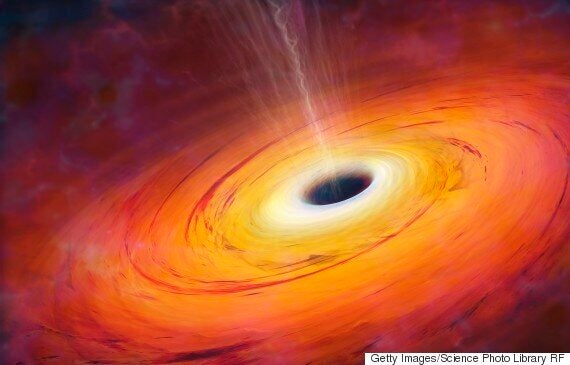Scientists at the University of Cambridge have, for the first time, simulated a five-dimensional black hole so powerful that it would have the ability to break down the rules of general relativity itself.
The researchers from the University of Cambridge and Queen Mary University of London used supercomputers to create a black hole model shaped like a ring.
SEE ALSO:
What the scientists wanted to do (aside from breaking a supercomputer) was to discover what would happen if you removed the conventional structure of a black hole.
Currently at the centre of a black hole is something known as a singularity, it's a place where gravity is so intense that space, time and our general theories of reality break down into nothing.

The film 'Interstellar' shows us what a black hole might look like from the outside, with the event horizon bending light itself.
Thankfully we're protected from singularities by something known as an event horizon - a 'point of no return' from where nothing inside the singularity can get out and we are unable to perceive anything entering it.
They wanted to find a way to remove the event horizon and instead have a naked singularity exist within our universe and the only way to do that, was by creating a ring.

As the ring begins to break down singularities become exposed to normal space.
What they then found was that the ring would start to destabilise, tapering off into four distinct bulges which would then finally break off resulting in four massive black holes.
“If naked singularities exist, general relativity breaks down,” said co-author Saran Tunyasuvunakool, also a PhD student from DAMTP. “And if general relativity breaks down, it would throw everything upside down, because it would no longer have any predictive power – it could no longer be considered as a standalone theory to explain the universe.”
“The better we get at simulating Einstein’s theory of gravity in higher dimensions, the easier it will be for us to help with advancing new computational techniques – we’re pushing the limits of what you can do on a computer when it comes to Einstein’s theory,” said Tunyasuvunakool.
Scientists have only just been able to prove that Einstein's theory was correct after nearly 70 years. The discovery of gravitational waves has been called a 'scientific highlight of the decade'.
The discovery of gravitational waves is significant for one simple reason - it allows us to see further into the past of our own universe and better understand the 'dark' side of space.
Incredibly the waves themselves were detected back in September 2015 when two locations of the Laser Interferometer Gravitational-wave Observatory (LIGO) gathered similar readings in the aftermath of two black holes merging.

The waves were detected when two black holes collided with each other around 1.3 billion years ago.
The black holes were between 29 and 36 times the density of our own sun and collided a staggering 1.3 billion years ago.
According to Einstein's Theory of General Relativity when two black holes orbit each other they lose energy through the emission of gravitational waves.
This in turn brings them closer together before finally resulting in a merging of the two into one giant black hole. This final merging causes a huge burst of energy, sending giant gravitational ripples through spacetime.
It was these ripples that the LIGO was able to detect.